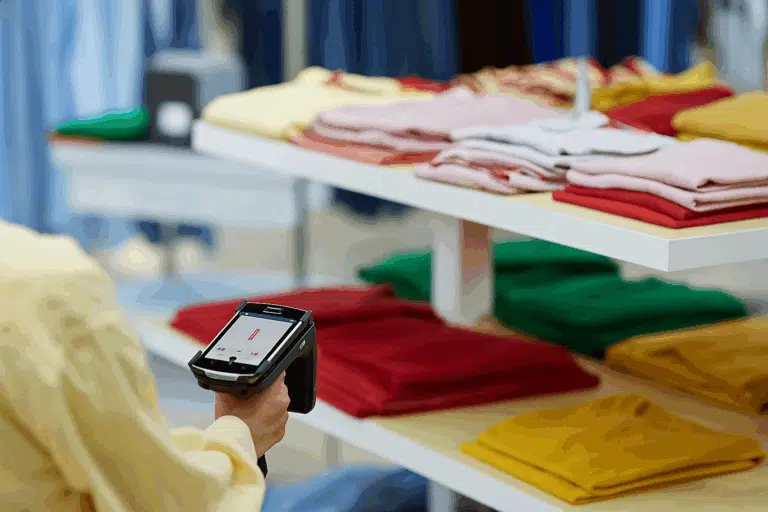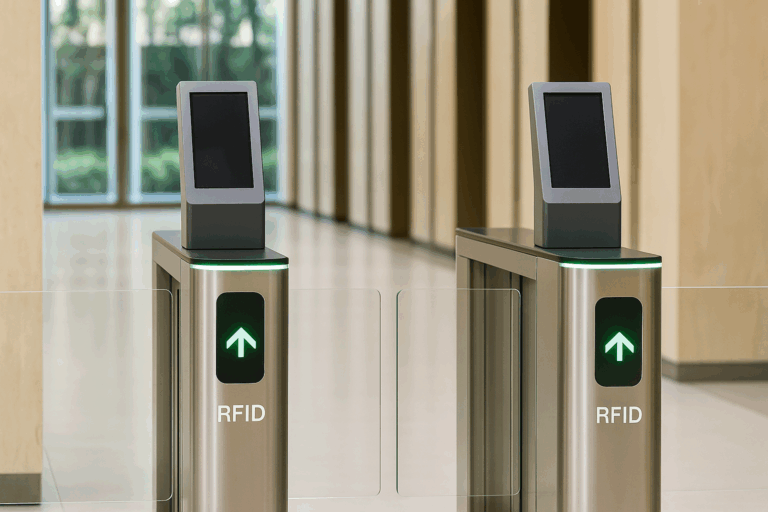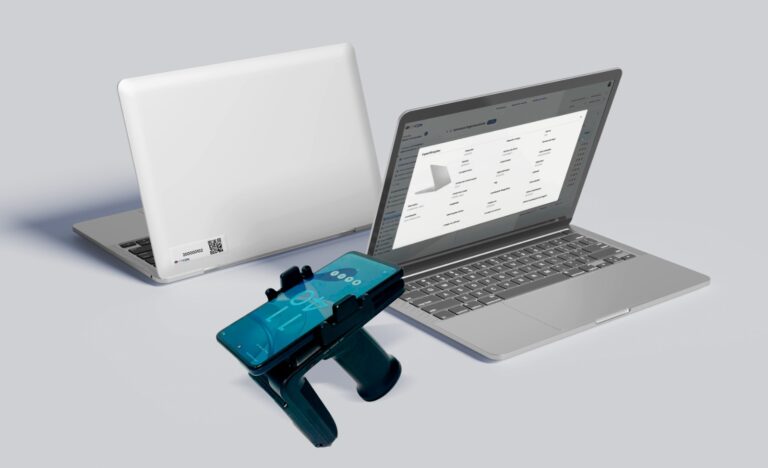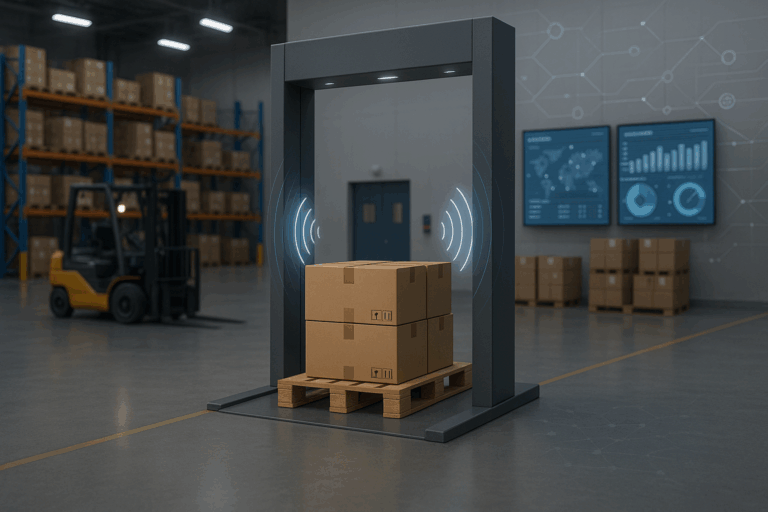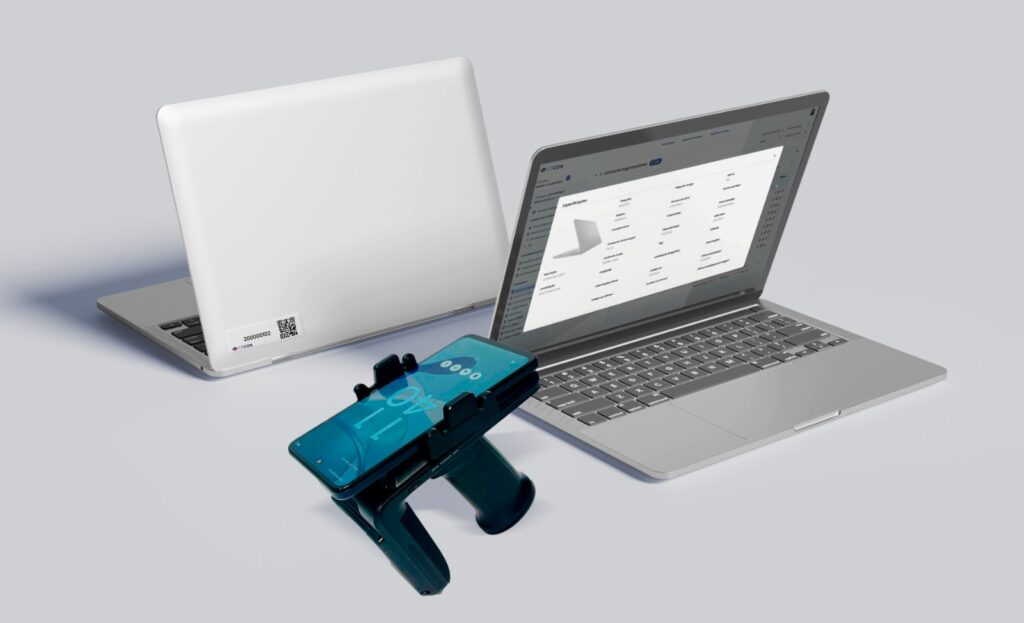RFID Inventory Management is a technology-driven approach that helps retailers control, track, and optimize inventory in real time. By using radio-frequency identification tags and readers, companies gain instant visibility into every item’s location, movement, and status—without relying on spreadsheets or manual counts.
This system exists because traditional inventory methods no longer keep up with the pace and complexity of modern retail. With high SKU volumes, omnichannel distribution, and increasing customer expectations, the risk of stockouts, overstock, and operational inefficiency becomes a costly reality. Retailers need more than numbers—they need precision, speed, and control.
Strategically, implementing RFID Inventory Management allows retail operations to reduce losses, enhance stock accuracy, and make faster decisions. It transforms inventory from a static list into a dynamic asset intelligence system—fueling everything from logistics to marketing with real-time data.
And that’s where CPCON makes the difference. With its CubeAssets platform, the company offers a fully customized RFID solution designed to align with the unique workflows of each retail environment. In this article, you’ll explore how RFID Inventory Management works, why it’s critical for retailers today, and how CPCON empowers retail businesses to reduce costs and operate with total efficiency.
Shall we begin?
Table of Contents
ToggleWhat is RFID Inventory Management in Retail?
RFID Inventory Management in retail refers to the use of radio-frequency identification technology to automatically track and manage inventory across stores, warehouses, and distribution centers. Unlike barcodes, which require line-of-sight scanning, RFID tags transmit data wirelessly, enabling bulk and contactless reading of thousands of items simultaneously.
At its core, this system connects physical products to digital data. Each item is equipped with an RFID tag that contains a unique identifier. Antennas and readers, positioned at strategic points—such as shelves, doors, or loading docks—capture the tag information in real time. This creates a live, continuously updated inventory database.
The result is a dramatic improvement in inventory visibility, accuracy, and speed. While traditional stock checks are often periodic and manual, RFID allows for automated, real-time inventory with over 99% accuracy. This eliminates blind spots, reduces shrinkage, and ensures that every SKU is accounted for, even in large, fast-moving retail environments.

A simple example from retail
Imagine a fashion retailer managing thousands of SKUs across multiple stores. With RFID tags embedded in clothing labels and readers installed at entrances and stockrooms, the system automatically logs every garment that enters, moves, or leaves the premises—without human intervention.
Managers no longer need to pause operations for inventory counts. Instead, they can access real-time dashboards showing stock levels, item locations, and movement history. This enables more agile restocking, better merchandising decisions, and faster response to demand changes.
RFID Inventory Management in retail isn’t just about automation—it’s about turning inventory into an intelligent, responsive system that drives efficiency, reduces costs, and enhances the customer experience.
- Looking to enhance inventory accuracy even further? Explore our fixed asset audit checklist.
Why Retailers Are Turning to RFID for Inventory Control
Retailers are turning to RFID for inventory control because traditional methods can no longer keep up with the complexity and speed required in today’s competitive landscape. Manual stocktaking, barcode scanning, and disconnected systems are prone to errors, slow to operate, and limited in scale.
The shift to RFID is driven by three main pressures: operational inefficiency, customer dissatisfaction, and lost revenue due to inaccurate stock data. When inventory records don’t match reality, the consequences multiply—stockouts, overstocking, delivery delays, and inability to fulfill omnichannel orders.
RFID solves these problems by offering real-time inventory visibility. Every item becomes traceable, every movement logged. This data empowers managers to make decisions based on facts, not estimates.
For example, in a large retail chain, it’s common for 10 to 20 percent of the inventory data to be inaccurate at any given time. That gap directly affects margins and customer trust. With RFID, retailers can reduce this discrepancy to less than 1 percent—creating a foundation for data-driven decisions, dynamic pricing, optimized fulfillment, and improved store execution.
RFID also helps retailers address challenges specific to their sector, such as:
- High product turnover and seasonal fluctuations
- Frequent transfers between stores and warehouses
- Increasing demand for same-day or next-day delivery
- Greater focus on sustainability and loss prevention
In short, RFID inventory control is no longer a luxury—it’s becoming a necessity for retailers who want to stay relevant, efficient, and profitable in a fast-changing market.
How RFID Boosts Retail Efficiency and Inventory Accuracy
RFID is a game-changer for retailers looking to increase operational efficiency and reduce inventory errors. By replacing manual and barcode-based processes with automated, wireless identification, retailers can manage large volumes of stock with precision and speed.
The key advantage lies in RFID’s ability to track thousands of items simultaneously, without human intervention. This removes the friction caused by repetitive tasks, slow counts, and scattered data sources.
Core benefits for retail operations
- Faster inventory counts
RFID enables cycle counts to be performed in hours instead of days, even in large stores or warehouses. - Higher inventory accuracy
With accuracy rates above 99 percent, RFID minimizes stock discrepancies and data mismatches. - Real-time stock visibility
Store managers can view live inventory dashboards showing exactly what is in stock, in which location, and in what condition. - Reduction in out-of-stock situations
Early alerts help trigger replenishment before shelves run empty, improving product availability. - Process automation
Movements such as receiving, transferring, and returns are automatically logged, reducing labor costs and manual errors.
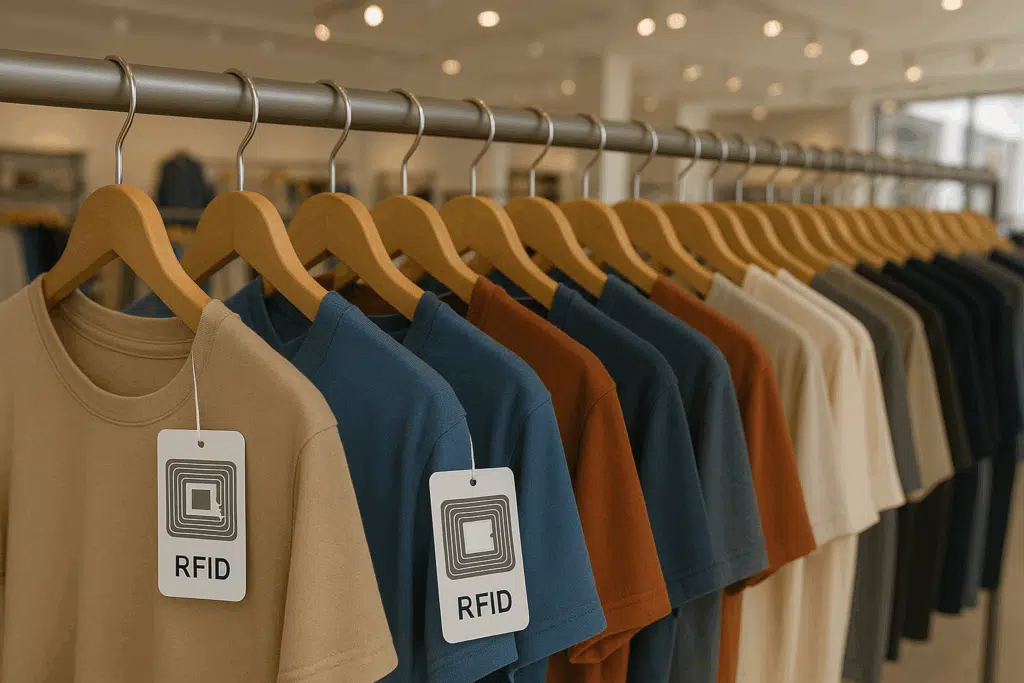
Real-world retail impact
In fashion retail, RFID adoption has led to sales increases of up to 5 to 15 percent, thanks to better product availability and faster replenishment cycles. In electronics and consumer goods, RFID reduces shrinkage and speeds up fulfillment. Across all categories, the result is the same: lower costs, faster operations, and a smoother customer experience.
By streamlining inventory control and increasing accuracy, RFID gives retailers the agility to respond to market changes with confidence.
- Understand how accurate inventory impacts financial statements through strategic depreciation control.
Practical Applications of RFID in Retail Environments
RFID is not just a tracking technology—it’s a versatile tool that adapts to the many layers of retail operations. From the stockroom to the sales floor, RFID enables automation, control, and visibility at every step of the inventory lifecycle.
Each retail environment has its own complexity. The beauty of RFID lies in how it integrates seamlessly into different workflows, regardless of product category or store size.
Where RFID is used in retail
- Inbound logistics
Products are tagged at the supplier level or upon arrival. RFID readers at receiving docks validate incoming shipments automatically. - Backroom and storage control
Every movement between stockroom and sales area is tracked. This helps reduce internal losses and locate misplaced items quickly. - Sales floor visibility
Items on display are monitored in real time, allowing for immediate restocking and better planogram compliance. - Point of sale (POS) integration
RFID can speed up checkout by identifying multiple items instantly—enhancing both accuracy and customer satisfaction. - Returns and reverse logistics
Returned items are scanned and verified instantly, ensuring that restock or disposal happens correctly and quickly.
Specialized use cases by retail category
- Apparel and fashion: Tagging individual clothing items for inventory, anti-theft, and dressing room tracking.
- Electronics: Managing high-value goods with real-time tracking and secure storage protocols.
- Grocery and perishables: RFID tags with temperature and expiration data for food safety compliance.
- Luxury retail: Authenticity verification and item-level tracking for valuable merchandise.
By embedding RFID into core retail operations, companies gain not only inventory control but also business intelligence. Every scan becomes a data point—fueling strategic decisions in pricing, supply chain, promotions, and customer service.
Integration with ERP and Existing Retail Systems
For RFID Inventory Management to deliver its full potential, it must integrate seamlessly with the systems retailers already use—especially ERPs, stock management platforms, and e-commerce channels. This integration is what transforms RFID from a tracking tool into a true intelligence layer for operations.
Retailers often operate with complex infrastructures. Integrating RFID into those systems avoids data silos and enables real-time decision-making across departments.
Key integration points
- ERP systems like SAP, Oracle, and TOTVS
- Warehouse Management Systems (WMS)
- E-commerce platforms and order management
- Point of Sale (POS) terminals
- Business Intelligence tools (Power BI, Tableau)
Each RFID event—whether an item entering a warehouse or leaving a store—can trigger automatic updates in your ERP, stock records, or fulfillment queue. This ensures consistency and eliminates the need for duplicate data entry or manual reconciliation.
Technical storytelling – RFID in action across multiple systems
Imagine a large retail chain with hundreds of stores and a central distribution center. Each item is tagged with an RFID label at the DC. As shipments are prepared, readers at the dock door scan the entire batch instantly. This data syncs with the ERP, updating the shipment status.
Once the truck arrives at the store, RFID gates confirm delivery and match it with the original order—updating the inventory automatically. If a customer makes an online purchase, the system knows exactly which store has stock available for same-day pickup, thanks to real-time RFID tracking connected to the e-commerce system.
No delays, no double entries, no blind spots. Just synchronized, accurate, and automated control.
By connecting RFID to core retail platforms, companies gain agility, eliminate friction, and make inventory data actionable across the business.
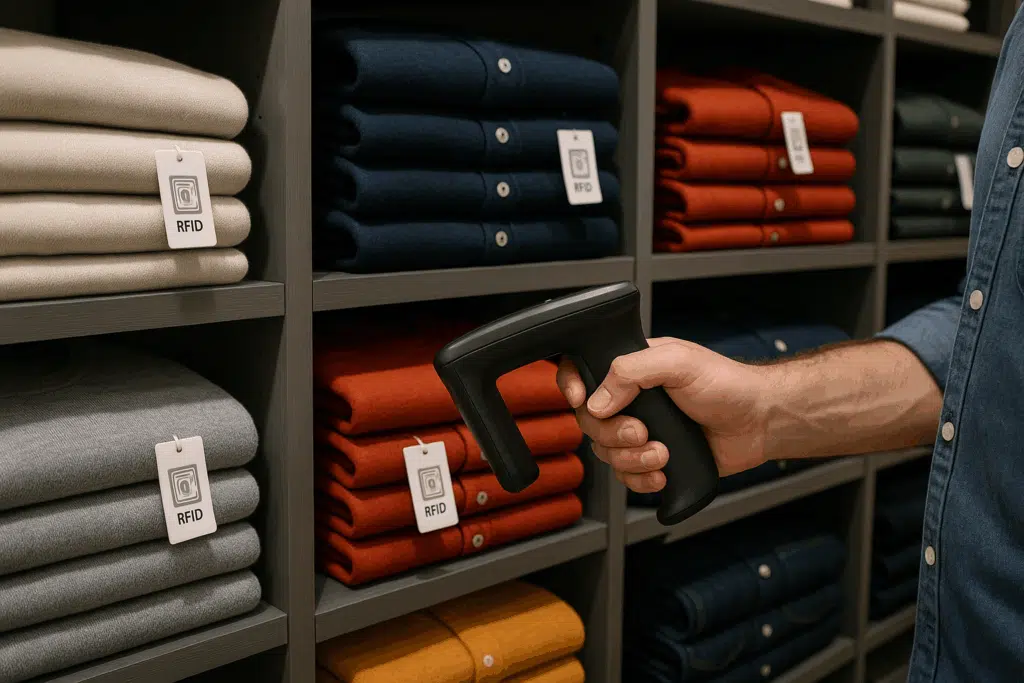
The Cost of Not Using RFID in Retail
Choosing not to adopt RFID in retail isn’t just a missed opportunity—it’s a growing liability. In a market where speed, accuracy, and customer satisfaction define success, outdated inventory methods can silently erode profitability and brand reputation.
Without RFID, many retailers face blind spots in their stock visibility. They rely on manual counts, static spreadsheets, and systems that update too slowly to reflect reality. The result is a widening gap between what the system says and what’s actually on the shelf.
Consequences of poor inventory control
- Frequent stockouts and overstocking
Inaccurate inventory data leads to lost sales or excess products tying up capital. - Higher operational costs
More staff time is required to count, reconcile, and correct inventory errors manually. - Weak omnichannel performance
Retailers struggle to promise accurate delivery times or offer store pickup when stock is unreliable. - Increased shrinkage and losses
Missing or misplaced items are harder to detect and resolve without item-level tracking. - Poor auditability and compliance risks
Without real-time records, internal audits become complex and prone to error.
Real example – A hidden inventory gap
In one retail chain analyzed by CPCON, a 6 percent inventory discrepancy was discovered during a physical count. The ERP showed 1.2 million items in stock, but only 1.128 million could be physically located.
That gap cost the company more than financial loss—it disrupted promotions, delayed shipments, and triggered customer complaints. With RFID, the same inventory check would have taken a few hours, not several days—and with much greater precision.
Failing to modernize inventory control is not just inefficient—it’s risky. As consumer expectations rise and competition tightens, the cost of inaction grows every day.
- Learn more about the hidden cost of poor inventory management and how to close the 6.5% gap.
How CPCON Helps Retailers Gain Full Control Over Inventory
CPCON delivers much more than RFID tags or scanners. It offers a comprehensive and intelligent inventory management system tailored to the complexity of modern retail operations. With CubeAssets, CPCON brings together RFID technology, automation, and custom workflows to provide full visibility and control over every asset and stock movement.
The solution is designed to integrate smoothly into retail chains—whether operating in a single region or across multiple countries. From the first diagnostic to post-implementation support, CPCON acts as a strategic partner, not just a technology vendor.
What CPCON delivers in practice
- Technical assessment and custom planning
Every project begins with a deep analysis of inventory flows, stock vulnerabilities, and operational goals. - Implementation of RFID infrastructure
CPCON installs fixed portals, mobile readers, and smart tags across all key points of the supply chain. - Full integration with ERP and retail systems
The CubeAssets platform connects directly with systems like SAP, Oracle, and e-commerce platforms. - Real-time dashboards and alerts
Managers receive live insights on stock levels, asset movement, and compliance checkpoints. - Ongoing optimization and audit support
CPCON supports inventory audits, reconciliations, and continuous improvement initiatives.
Use case – A large electronics retailer
A national electronics retailer partnered with CPCON to manage its high-value inventory across 200+ stores. The solution included RFID-enabled stockrooms, real-time dashboards for replenishment, and mobile auditing tools. Within six months, the retailer reduced inventory errors by 94 percent and improved shelf availability by 22 percent.
CPCON transformed what was once a manual, error-prone process into a lean, automated inventory ecosystem. That’s the power of combining technology with expertise.
With CPCON, retailers don’t just improve inventory—they gain the strategic insight to scale with confidence.
Ready to take full control of your retail inventory? Talk to CPCON and discover how our RFID-powered solutions can reduce costs, eliminate errors, and drive smarter decisions.
RFID as a Retail Game Changer: Control, Efficiency, and Real-Time Intelligence
RFID Inventory Management is no longer optional for retailers seeking efficiency, accuracy, and competitive advantage. It’s a strategic response to the growing complexity of retail operations, where manual tracking and outdated systems can no longer deliver the control and visibility required.
By integrating RFID with existing systems and workflows, retailers gain real-time insights, reduce losses, accelerate operations, and optimize decision-making. When implemented with expertise, as CPCON does through CubeAssets, RFID becomes more than a technology—it becomes the foundation of intelligent inventory management.
Choosing the right partner makes all the difference. CPCON empowers retail leaders to transform their operations through innovation, automation, and full inventory control.
Looking to revolutionize your retail inventory strategy? Partner with CPCON and discover how RFID Inventory Management can drive real results across your entire operation.
FAQ
What is RFID inventory management and how does it work in retail?
RFID inventory management uses radio-frequency identification tags to track retail products in real time. It enables automatic reading of item data without line-of-sight, improving speed and accuracy in stock control.
How does RFID improve inventory visibility and reduce costs?
By offering real-time tracking and high inventory accuracy, RFID reduces errors, prevents stockouts, and minimizes overstocking. This leads to lower operational costs and more efficient decision-making.
Is RFID inventory management compatible with ERP systems like SAP or Oracle?
Yes. Modern RFID platforms, like CPCON’s CubeAssets, integrate directly with ERP systems through APIs, ensuring synchronized data across inventory, finance, and operations.
What types of retailers benefit the most from RFID solutions?
Retailers with high SKU turnover, multiple locations, or omnichannel logistics—such as fashion, electronics, or consumer goods—benefit significantly from RFID automation and traceability.
How can CPCON help implement RFID inventory management in retail?
CPCON offers end-to-end support—from technical assessment to full system integration and training. Its CubeAssets platform adapts to each retailer’s structure, delivering accurate, scalable, and intelligent inventory management.

